Dr Nava Sonnenschein is one of the founding members of the binational egalitarian community, Neve Shalom – Wahat al-Salam. In this interview with Ruth Ebenstein, Sonnenschein explains how she came to build ‘School for Peace’ and explain why Israel, now aged 70, will eventually have to come to terms with its past if it wants to make peace with its neighbour and fulfil the Zionist dream of her parents.
Introduction
Dr. Nava Sonnenschein’s family history reads like a page from a textbook on Israel’s Zionist founders. Her personal history reads like a page from a textbook on the ways in which Jews and Palestinian Arabs can live together in harmony and equality.
Sonnenschein is one of the four founding families that created Neve Shalom – Wahat al-Salam (‘Oasis of Peace’), a binational egalitarian community of Jewish and Palestinian-Arab citizens of Israel, located on one of the two Latrun hilltops overlooking the Ayalon Valley. She is also a founder and director of the country’s first and only School for Peace, located in the same community. Since 1980, Sonnenschein has taught some 70,000 Israelis and Palestinians aged 16-72 how to dialogue-around-conflict, using a signature method that she helped develop at the School for Peace.
Was this pioneering path a natural progression of her family’s values, or did it constitute a sea change?
‘Oh, it was a bit of both,’ chuckles Sonnenschein in her office at Neve Shalom – Wahat al-Salam, overlooking fig trees, pomegranate trees and pine. ‘I’ve continued the social justice values upon which I was raised, but I’ve also blazed trails of a different sort.’
Both of Sonnenschein’s parents immigrated to Palestine from Europe in 1939 as refugees fleeing the Nazis. Their biographies feature elements prominently woven into the founding narrative of the state. Her father, Aharon Martinovich, hailed from Michlovece, Slovakia, and entered the country legally with his then-wife, Haviva Reik. Martinovich and Reik helped found Kibbutz Maanit, near Karkur, part of Hashomer Hatzair’s Kibbutz Haartzi movement. Little did he know that while he tilled the land and debated Socialism versus Communism, every member of his extended family was being slaughtered in Europe. After divorcing Martinovich, Reik was one of 30-some parachutists sent in 1942 by the Jewish Agency on missions to Nazi-occupied Europe. She was captured and killed, and earned a hallowed place in the Zionist pantheon.
Sonnenschein’s mother, Pnina Guterman, hailed from Lvov, Poland. She was Martinovich’s second wife. Guterman came to Israel illegally, in 1939, on the Tiger Hill, a boat that sailed from Constanta with some 750 immigrants on board. Guterman worked as an accountant at the Dead Sea Factory and dreamed of buying a plot in Tel Aviv and bringing her parents and siblings to Palestine. Her vision disintegrated when she learned that they had all been murdered and hurled into a mass grave in Poland.
Guterman and Martonovich, the only survivors of their respective families, met in Haifa and married in June 1945. The younger of their two daughters, Nava, was born a mere five years after the establishment of the State of Israel, in 1953. I sat down with Sonnenschein to discuss the occasion of Israel’s 70th birthday.
My Zionism
Ruth Ebenstein: Israel is celebrating its 70th year. What do you think of when you think of Zionism?
Nava Sonnenschein: For me, Zionism connects to my parents fleeing the atrocities of Europe and choosing to come here, rather than settle in the US or elsewhere. There are those who believe that Zionism is just classic colonialism. That’s not the case; it’s more complicated. My parents came as refugees. At the same time, they were settlers and the Palestinians were natives living in the land. For some, that might be a bitter pill to swallow, but we have to recognise that.
(Photo: Nava’s father. Courtsey of the author.)
I would definitely characterise the land grab and military occupation in the West Bank and in other parts of the country, post-1967, as colonialism. But that does not apply to my parents and other like them, who came here with the sole goal of saving their lives, not to seize land.
Although in coming to Israel my family fled the Nazi regime, my takeaway message from the Holocaust differs greatly from that of mainstream Israel. The socialisation imparted in our schools and in the media has always been that we need to be strong so that it will never happen again. And that the world hates us. In contrast, what I’ve gleaned from my family’s history, from our people’s history, is more universal. I think it ought to be: don’t oppress another group, any other group. Our experience teaches us that we need to be big-hearted and make room in our lives for another people. When I apply that to the Zionist ideal, I say, we must recognise that we came to a land where there were also other inhabitants, and that we need to find a way to live together in mutual respect and complete equality.
Becoming a peace activist
RE: How did you become a peace activist? When did the topic of Jewish-Arab rights surface for you and crystallise?
NS: I remember the exact moment when I sensed that perhaps I had been sold a bill of goods. After the Yom Kippur War in 1973, I attended a memorial ceremony at my high school, Tichon Ironi Gimmel, in Haifa. I was 20 years old; my friends and I were all serving in the Israel Defense Forces (IDF). Many people I knew had been killed, including my first love, Nimrod Gazit, and Muly, my cherished counsellor in the ‘hamachaneh haolim’ youth movement. I’d also seen the horror and trauma of the wounded; I went to Soroka Hospital in Beer Sheva to visit an injured friend, and saw soldiers whose bodies were burned badly, who had body parts hanging in the air.
The speakers at the memorial ceremony recited what seemed like rote lines about how the valiant soldiers had sacrificed their lives so that we could live. As if there was no alternative. I thought, ‘Wait a minute! There must be another way.’ I felt a sharp pit in my stomach. I thought to myself, ‘Isn’t it time that we find a different approach to this rather than just military conflict?’
And so began a journey of opening my eyes. Reading the history, I started to see things differently. I learned about the ways in which we Jews had discriminated against the people who were already living here, and that we were continuing to do so. I realised we really needed to pave another path.
RE: How did you find that new pathway?
NS: In 1974 I began my bachelor’s degree in education and art at Haifa University, and started working with Edna Zaretzky, a staunch feminist and peace activist, a sociologist and an educator. Edna introduced me to the field of Jewish-Arab relations, and I discovered how much I did not know. For example, I started reading the land-expropriation laws, and my eyes popped out of my head in shock when I realised the extent of discrimination against Palestinian-Arab citizens of Israel. I read more and more, and eventually started going to demonstrations.
Working with Edna and Abed Al Rachman of Shfaram, we moderated one of the first Jewish-Arab groups, made up of Jewish and Arab Israeli young leaders from low-income communities in Haifa and Shfaram. We organised activities in art and drama, and discussed current events. That was my first foray into this field.
In March 1976 the government published a plan to expropriate 21,000 dunams (5,250 acres) in the Galilee for national use. Some 30 per cent of the land was Arab-owned. In response, Arab towns across Israel organised a general strike and marches to protest, which represented the first time they had planned a national collective response since 1948. There were demonstrations and riots; six unarmed Israeli-Arab citizens were killed, about 100 were wounded, and many more arrested. The day of protests later became known as Land Day. I was horrified. Our police were shooting at our citizens? That injustice shook me to the core.
Then in September of that year, the Israeli newspaper Al Hamishmar leaked the Koenig Document, which was a confidential internal Israeli government memorandum authored by Yisrael Koenig, the North District Commissioner of the Interior Ministry. That report elucidated means to reduce the number and sway of Arab citizens living in the Galilee. It was the first public confirmation of the government’s discriminatory policies, citing ways to contain the minority through coercion and subversion. That discovery rattled me, too.
In the summer of 1977, I heard about a week-long seminar for 70 Jews and Arabs that took place at Neve Shalom – Wahat al-Salam. My husband Cobi and I went. We fell in love with the place. I was enthralled by the notion of a real alternative to the country’s ruling and racism – the idea of Jews and Arabs living together in equality. It was a real counterpoint to the movement underway in those days, with the government’s blessing, to settle the West Bank.
A handful of those who attended the workshop founded the Neve Shalom – Wahat al-Salam village. Ours was the third family to join the community. I was seven months pregnant when we left our apartment in Rehovot, where my husband was pursuing his doctorate in theoretical physics at the Weizmann Institute of Science. The land was barren, an area atop a rocky hill with a few huts, so they got us a trailer. In February 1979 the truck transporting our trailer got stuck on the unpaved muddy road into the village due to heavy rains. Like Noah’s Ark, we had to wait for the water to go down. That 500-square-foot trailer was our home for five years.
(Photo: Nava’s family during the early days of Neve Shalom – Wahat al-Salam. Photo courtesy of the author.)
We lived off the grid in Neve Shalom – Wahat al-Salam. For electricity, we had a small generator and a medium-size generator and a little water pump. That water pump is similar to what some Palestinians have today. When I visit Hebron and Bethlehem, I see black containers of water on the rooftops not unlike the one we had then, on our trailer. Granted, there were moments of physical challenge, but our mission of coexistence and equality really sustained us. Two months after we arrived, I gave birth to our first child, Nir, who was also the first baby born there.
Many friends and family thought it was impractical, even a bit insane to make that move while pregnant and stay there with my tiny baby. ‘We had to be pioneers and build this country from scratch,’ quipped my mother, ‘but you don’t’! I thought to myself, ‘Ah, but I do’. The vision of a binational community had to be realised.
Neve Shalom – Wahat al-Salaam
RE: Tell me about those early years in Neve Shalom – Wahat al-Salam.
NS: We would gather in the hall for a potluck dinner on Friday nights. I remember this couple, Rachel and Francis, who got married on one of those evenings, the bride clad in a white dress, riding on a donkey borrowed from a Bedouin we knew. On cold winter nights, we had to turn off our heater to conserve electricity. We talked about everything – from what should our kids learn in the preschool to what we would do if the water pump died. When Nir was just one year old the water pump did die and we had no water for three weeks. We had to fill jugs at Kibbutz Nachshon nearby. Of course, we had no phone. I remember fondly celebrating Jewish and Muslim holidays. Four families living together with a few single folks, well, that’s really like one big family.
RE: How did you come to start the School for Peace?
NS: While living together in equality greatly enriched our lives, we felt impelled to transmit this idea beyond the confines of our tiny community. After staying home with Nir for six months, I gathered a core of 20 Jews and Arabs from that workshop in the summer 1977, and from other places. We created a thinking group and designated five moderators. Together, we built the School for Peace.
In the summer of 1980 we organised our first four workshops for teens. Back then, we already did simulations that were quite revolutionary. Participants dialogued about how to better solve problems between Jewish and Arab villages in the Galilee. For example, we gave them scenarios with a few variables: a Palestinian village destroyed in 1948 with its residents now living as refugees in a nearby village and facing a housing shortage, a development town dealing with unemployment, a kibbutz employing residents from both. We challenged the teens to find more just ways to divvy up the resources.
The name ‘School for Peace’ was inspired by Wellesley Aron, who founded Habonim, the largest Zionist youth movement worldwide, and served as secretary for Chaim Weizmann in pre-state Palestine. Aron also helped pioneer our community and moved there with his wife in 1980. Legend has it that he was chatting with his grandson, Israeli singer David Broza, who said: ‘There are many academies for war, why isn’t there even one academy for peace?’ And so the moniker ‘School for Peace’ was born. I’ve been schooling in peace, and for peace, ever since.
RE: How does the School for Peace model work?
NS: We bring together Jewish Israelis, Palestinian citizens in Israel, who are also called Arab Israelis, and Palestinians who live in the West Bank, and articulate clearly from the outset that we’ve gathered to speak about the conflict. The issues related to the conflict are put right on the table and addressed. And we also relate to the participants as representatives of their group identities, rather than as individuals. We examine intergroup relations, rather than interpersonal relations, mindful of the asymmetrical power relationship between the groups.
For the Palestinians, it’s quite natural to be related to as representing a group identity. They experience discrimination as being part of the group called ‘Palestinian’. For the Jewish Israelis, it’s a new experience and more difficult to assimilate. The innovation for the Palestinian participants is that they can, for the first time, confront their oppressors and tell them about the terrible things they’ve experienced without feeling oppressed. It’s empowering. They see that their voices can be heard, and that they can influence change in the other side. They also can connect to the identity of, and better understand, the other side. Whereas beforehand the ‘Other’ was just some soldier, now that same soldier is a human being who cared enough to come to meet you and listen to you.
Jewish Israelis gain understanding that they’re part of what is happening on the macro level. They understand that the Occupation is not outside of them. Maybe your spouse is in the army in the Occupied Territories. You pay taxes to the state that is using your tax dollars to build settlements. You are part of what your group is doing to the other group.
Righting wrongs
RE: How does your work shape your perception of the IDF?
NS: Israel needs the IDF. It cannot exist without an army. But I believe it should be an army for defence, not a police force. I have problems with the IDF policing and controlling millions of Palestinians to protect settlers. The IDF in its current form executes missions that oppress another people, and assists in building settlements. When young people are called upon to police citizens, it can be traumatic and injurious to our society. It’s unfair to them. They do not yet have well-developed skills in critical thinking to understand all that is at play.
RE: Despite your criticism of Israel, it’s clear that you feel deeply connected to the land…
NS: Oh, I do. Despite my strong conviction that a lot must be changed, I feel profoundly connected to this place and to the people living here, both Jewish and Palestinian. My family and friends are here. I love Hebrew and Arabic. I love the intimacy between people, the candour, the landscapes, and the incredible diversity. Mono-ethnic is boring. I’m also proud of our nation’s accomplishments. In a very short time, we’ve achieved so much in high-tech, literature, environment, many arenas. We have many things that are beautiful. I love Israel’s sights and smells. The time I spent studying in California during my husband post-doctoral fellowship was fascinating, but I missed my community back home.
RE: How do you feel about the Israeli flag and Hativka, the national anthem?
NS: There’s what I feel, and there’s what I know. If I heard the opening notes of Hatikva while visiting another country, I would feel tugs at my heart. But when I think about it, I know that our national anthem is overtly Jewish and excludes 20 per cent of our citizens. We haven’t included them in our flag, or in the character of our country. I feel sad that we missed the opportunity to build the humane state that I wanted for my children and grandchildren.
I truly believe that the Jewish people had the right to establish a state after the Shoah. I just wish it had been done differently. I wish we had done so without alienating the minority that still lives here. We should have invested more thinking in how to better take into consideration those who lived here before us, and those who live here now. It’s not too late to right our wrongs.
That certainly doesn’t mean we have to pack our things and go. All I’m saying is that for our own sake and for the sake of our children, if we want this glorious project called the State of Israel to be democratic and sustainable, we ought to embrace our Arab citizens as equals and correct our injustices. We have to make peace with the Palestinians so they can have their own independence, and their own anthem. Like we do in our little village, and in our educational model.
RE: Your work keeps you deep-diving into the mire of Israeli-Palestinian all the time. What keeps you going?
NS: Meeting the ‘Other’ in the right environment and under the right conditions can change your life and your approach. Israelis and Palestinians in our programme do find ways to expand and broaden their identities to include the other. I’ve got a book coming out in the fall with Rutgers University Press called The Power of Dialogue between Israelis and Palestinians: Stories of Change from the School for Peace. I conducted in-depth interviews with 25 Israeli and Palestinian graduates of our programme. Pages of stories of people whose lives have been changed to promote peace: implementing what they’ve learned in human rights, politics, environment, social work, urban planning, civil engineering, you name it. Witnessing that change fills me with hope.
Jews wants to see themselves as humanistic and liberal. I get that. Dealing with the past is complicated and painful. It’s easier for us to deny that people that were displaced and 532 communities were destroyed to create Israel, to ignore the injustices we’ve perpetrated. It’s basic social psychology that people want to have a positive image of themselves and their group. When people encounter something bad that their group did, they feel dissonance. Who wants to take responsibility? But we have to be bigger and better than that. There really is no other alternative, no other way forward. We owe it to our Jewish roots.
Granted, these are scary times for left-wing activists and peacemakers. Our democracy is being degraded. There are efforts to undermine the Supreme Court’s efficacy at protecting basic human rights, and social justice and human rights organisations are vilified. My parents moved heaven and earth to come to this country. If I’m here, I have to do something to make it better. I love this country, and I’m not going to watch from the side-lines as it deteriorates. I’ve chosen a path to make a difference, and our successes are not small. Some 70,000 graduates is not a small number of participants! To me, that’s reason to celebrate — and to keep the faith.

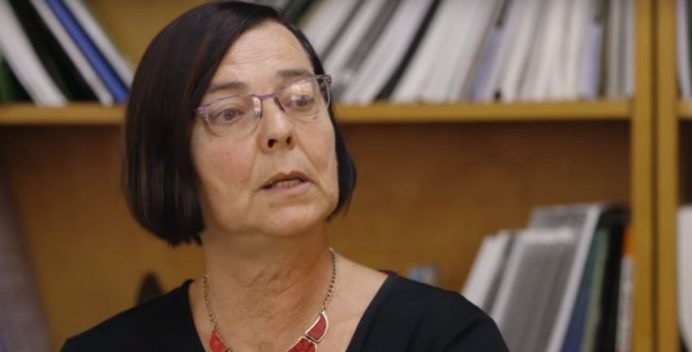
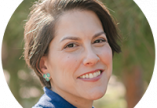
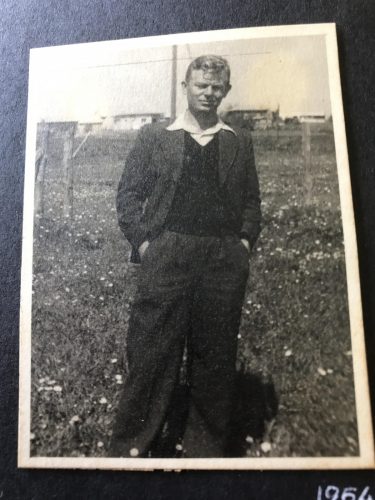
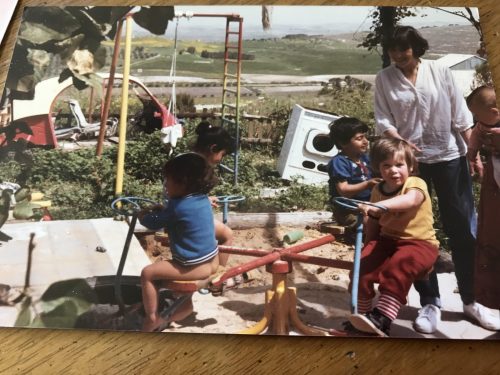

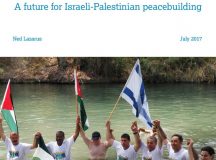
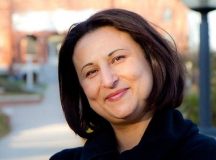
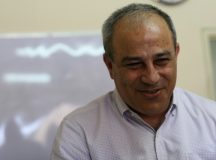































Anti-Zionism is that form of anti-Semitism that promotes contempt ,discrimination or dehumanization of the Jews as a people group or national group.
I was very touched by this article and clarity of thought by Dr Nava Sonnenschein. Israel should be proud of someone like her and what she and others created in Neve Shalom Wahat al Salam and continue to build on.